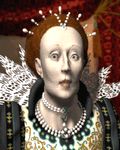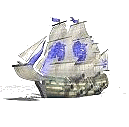The English |
||||||||||||||||||||||||||||
| Profile | ||||||||||||||||||||||||||||
|
||||||||||||||||||||||||||||
|
English Cities
Great Leaders
|
Background
In Roman times Britain lay on the periphery of the civilized world, and it emerged into the light of history only after the Saxon settlements in the 5th century AD. Tribal migrations into Britain began about the middle of the 5th century. The first arrivals were invited by a British chieftain to defend his kingdom against the Picts and Scots. The first mercenaries were from three tribes – the Angles, Saxons, and Jutes – which located on the coastlands of northwestern Germany. Eventually, these peoples would themselves topple the native kingdoms. But unity was fleeting; the subsequent Norman Conquest (1066) resulted in the subordination of England to a Frankish aristocracy, and the introduction of feudalism to the Isles. The English Normans would eventually give rise to a purely British line of kings, the Plantagenets. Three centuries later, the Wars of the Roses was the final struggle between the Yorkist and Lancastrian descendants of the Plantagenets for control of the throne. When Henry Tudor, earl of Richmond, seized the crown in 1485, leaving the Yorkist Richard III dead upon the field of battle, few Englishmen would have predicted that 118 years of Tudor rule had begun. Elizabeth I (1558-1603) proved to be the most able Tudor monarch. No observer in 1558, any more than in 1485, would have predicted that despite the social discord, political floundering, and international humiliation of the past decades, the kingdom again stood on the threshold of an extraordinary age. Her reign ushered in two centuries of British exploration, colonization, artistic and intellectual advances. When Elizabeth, the “Virgin Queen,” died childless, Parliament offered the crown to the closest blood kin, James VI of Scotland (1603-1625) and the United Kingdom was born, defended by the “wooden wall” of the Royal Navy’s Men-o-War. Every major war Britain engaged in during this period increased its colonial power. The Seven Years’ War was particularly notable in this respect, and so were the Napoleonic Wars. By 1820 the total population of the British Empire was 200 million, 26% of the world’s total population. However acquired, all these acquisitions added to the crown’s and the country’s power and reputation. For the privileged and the rich, the Victorian era was pre-eminently one of confidence and arrogance, under the able guidance of Britain’s two Prime Ministers, Gladstone and Disraeli. But the “long summer of peace” came to an end in the bloodbath of Flanders. Although Britain suffered far less physical damage than France and underwent no political revolution, World War I may have affected it more fundamentally than any other European power. The war was a catalyst for social and economic change. The mainstays of the Industrial Revolution, such as coal mining, textile production, and shipbuilding, upon which British prosperity had been built, were now impoverished or redundant. British foreign policy for much of the postwar period aimed at rehabilitating Germany, while domestic policy focused on institutionalizing socialism to counter public concerns. In general, these movements were opposed by France and resulted in a rupture between Britain and its wartime ally, forcing France into a position of isolation that would have prodigious consequences for Europe with the rise of Hitler in the 1930s. Margaret Thatcher (1979-1990) set out to end socialism in Britain. Her most dramatic acts consisted of a continuing series of statutes to denationalize nearly every industry that Labour had brought into public ownership during the previous 40 years. Promising that “we shall govern as New Labour,” the Blair government installed in general elections in 1997 accepted some of Thatcher’s foreign policies but also carried out the economic reforms it promised in its manifesto. In retrospect, the 1990s were a period of transition, controversy and continuity in the United Kingdom, and for the royal family… Europe’s oldest surviving monarchy. Unique Unit: the Man O’War The Man O’War is an upgraded version of the frigate. Like the frigate, it requires iron and saltpeter to build, but its heavier guns give it upgraded attack and bombard ratings, which make it a more formidable vessel.
|
|||||||||||||||||||||||||||

 The British are expansionist and commercial. They start the game with the Alphabet and Pottery and build men-o-war instead of frigates.
The British are expansionist and commercial. They start the game with the Alphabet and Pottery and build men-o-war instead of frigates.  By the middle of the 17th century cannons arrayed along the sides of fighting ships had become the decisive weapon of naval warfare. Heavy guns required a gun deck and a short, sturdy hull, which were at odds with the galley’s requirements of lightness and length. The late Elizabethan galleon that became the true man-o-war class reached its culmination in England’s Prince Royal of 1610 and the larger Sovereign of the Seas of 1637, mounting guns on three decks; the Sovereign of the Seas, the most formidable ship afloat in its time, carried 100 guns. By the mid-1700s, great ships-of-the-line such as the British Victory and French L’Orient dominated naval warfare, and would continue to do so until the advent of the ironclad.
By the middle of the 17th century cannons arrayed along the sides of fighting ships had become the decisive weapon of naval warfare. Heavy guns required a gun deck and a short, sturdy hull, which were at odds with the galley’s requirements of lightness and length. The late Elizabethan galleon that became the true man-o-war class reached its culmination in England’s Prince Royal of 1610 and the larger Sovereign of the Seas of 1637, mounting guns on three decks; the Sovereign of the Seas, the most formidable ship afloat in its time, carried 100 guns. By the mid-1700s, great ships-of-the-line such as the British Victory and French L’Orient dominated naval warfare, and would continue to do so until the advent of the ironclad.